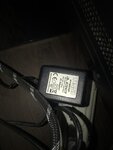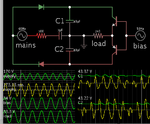fjpompeo
Advanced Member level 1
Dear sirs,
Here in the country that I live the outlet voltage is 127V and frequency 60Hz but I need 24V 50Hz (precise) 100mA how do I build a converter?
I have a REGA turntable bought in England and I'll install here in my house in Brazil.
Please, take a look at the attached photo.
Regards,
Fernando - Call sign PU2PLL - Brazil
Here in the country that I live the outlet voltage is 127V and frequency 60Hz but I need 24V 50Hz (precise) 100mA how do I build a converter?
I have a REGA turntable bought in England and I'll install here in my house in Brazil.
Please, take a look at the attached photo.
Regards,
Fernando - Call sign PU2PLL - Brazil

